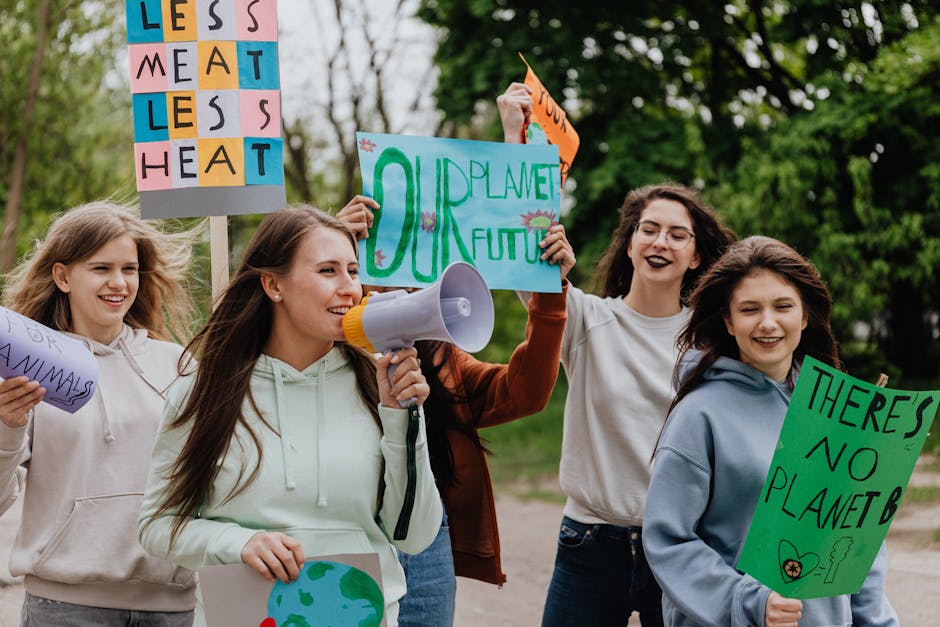The Role of Grassroots Movements in Conservation
Conservation is vital for the preservation of our planet’s biodiversity and ecosystems. While governments and large organizations play a significant role in conservation efforts, grassroots movements have emerged as powerful agents of change. These movements, driven by passionate individuals and local communities, are making a tangible impact on environmental conservation worldwide.
Understanding Grassroots Movements in Conservation

Grassroots movements are community-based initiatives that focus on creating positive change from the bottom up. In the context of conservation, these movements mobilize individuals, local communities, and organizations to address environmental issues, protect wildlife, and promote sustainable practices. Unlike top-down approaches, grassroots movements are characterized by their decentralized structure, inclusivity, and emphasis on community engagement.
Grassroots conservation efforts can take various forms, including community-led campaigns, environmental education programs, habitat restoration projects, and advocacy for policy change. These movements are driven by a shared passion for nature and a commitment to preserving our planet for future generations.
The History of Grassroots Conservation Movements

The roots of grassroots conservation movements can be traced back to early environmental advocacy efforts in the 19th and 20th centuries. The establishment of national parks, wildlife sanctuaries, and conservation organizations laid the foundation for grassroots activism in the conservation movement.
One of the most iconic grassroots conservation movements in history is the Chipko movement in India. Originating in the 1970s, the Chipko movement was a nonviolent protest against deforestation, where local communities hugged trees to prevent them from being cut down. This movement not only raised awareness about the importance of forests but also led to significant policy changes regarding forest conservation in India.
Real-Life Examples of Grassroots Conservation Movements

Grassroots conservation movements are active around the world, tackling a wide range of environmental issues. One notable example is the Surfrider Foundation, a grassroots organization dedicated to protecting oceans and beaches through community engagement, advocacy, and education. The Surfrider Foundation mobilizes volunteers to clean up beaches, advocate for marine conservation policies, and raise awareness about the impact of plastic pollution on marine ecosystems.
Another inspiring grassroots conservation movement is the Green Belt Movement in Kenya, founded by Nobel Peace Prize laureate Wangari Maathai. This movement focuses on tree planting, environmental conservation, and women’s empowerment. Through community-led reforestation projects, the Green Belt Movement has planted millions of trees, restored degraded landscapes, and empowered local communities to combat deforestation and climate change.
The Impact of Grassroots Movements on Conservation

Grassroots movements play a crucial role in conservation by engaging local communities, raising awareness about environmental issues, and advocating for sustainable practices. These movements have the unique ability to mobilize individuals at the grassroots level, driving change through collective action and community empowerment.
One of the key strengths of grassroots movements is their ability to effect change at the local level. By working closely with communities, grassroots organizations can tailor conservation initiatives to address specific environmental challenges faced by local populations. This localized approach ensures that conservation efforts are contextually relevant, culturally sensitive, and sustainable in the long run.
Moreover, grassroots movements have the power to influence policy decisions and corporate practices through advocacy and public pressure. By raising awareness, mobilizing supporters, and collaborating with stakeholders, grassroots organizations can drive systemic change and hold decision-makers accountable for their environmental impact.
Challenges and Controversies in Grassroots Conservation Movements
While grassroots movements have made significant strides in conservation, they also face challenges and controversies. Limited funding, lack of resources, and competing priorities can hinder the effectiveness of grassroots organizations. Additionally, grassroots activists may encounter resistance from government authorities, corporations, or other vested interests that are opposed to environmental conservation efforts.
Controversies may arise within grassroots movements regarding strategies, approaches, and priorities. Some activists advocate for direct action and civil disobedience to achieve conservation goals, while others prefer to work within existing systems to bring about change. Finding a balance between radical activism and pragmatic engagement is a common challenge for grassroots conservation movements.
Common Misconceptions About Grassroots Conservation Movements
One common misconception about grassroots conservation movements is that they are small-scale and lack impact compared to larger organizations. In reality, grassroots movements have proven to be highly effective in driving change, influencing policy, and raising awareness about environmental issues. Their decentralized structure, community-driven approach, and grassroots support give them a unique advantage in creating meaningful conservation outcomes.
Another misconception is that grassroots movements are limited in scope and cannot address complex environmental challenges. While grassroots organizations may focus on specific issues or regions, their impact can be far-reaching when scaled up or replicated in other contexts. By building alliances, sharing best practices, and leveraging social networks, grassroots movements can amplify their impact and contribute to global conservation efforts.
Conclusion: Empowering Communities for Environmental Conservation
Grassroots movements are a driving force in environmental conservation, empowering communities to take action, protect natural resources, and advocate for a sustainable future. By engaging individuals at the local level, grassroots organizations are creating a groundswell of support for conservation efforts worldwide.
As we face unprecedented challenges such as climate change, habitat loss, and biodiversity decline, grassroots movements offer hope and inspiration for a better tomorrow. By nurturing a sense of stewardship, fostering community involvement, and promoting environmental awareness, grassroots organizations are leading the way towards a more sustainable and resilient planet.
To wrap things up, grassroots movements are not just about saving the environment; they are about building a more equitable, just, and harmonious world for all living beings. Let us join hands with grassroots activists, support their efforts, and work together to protect and preserve the natural beauty of our planet for generations to come.




